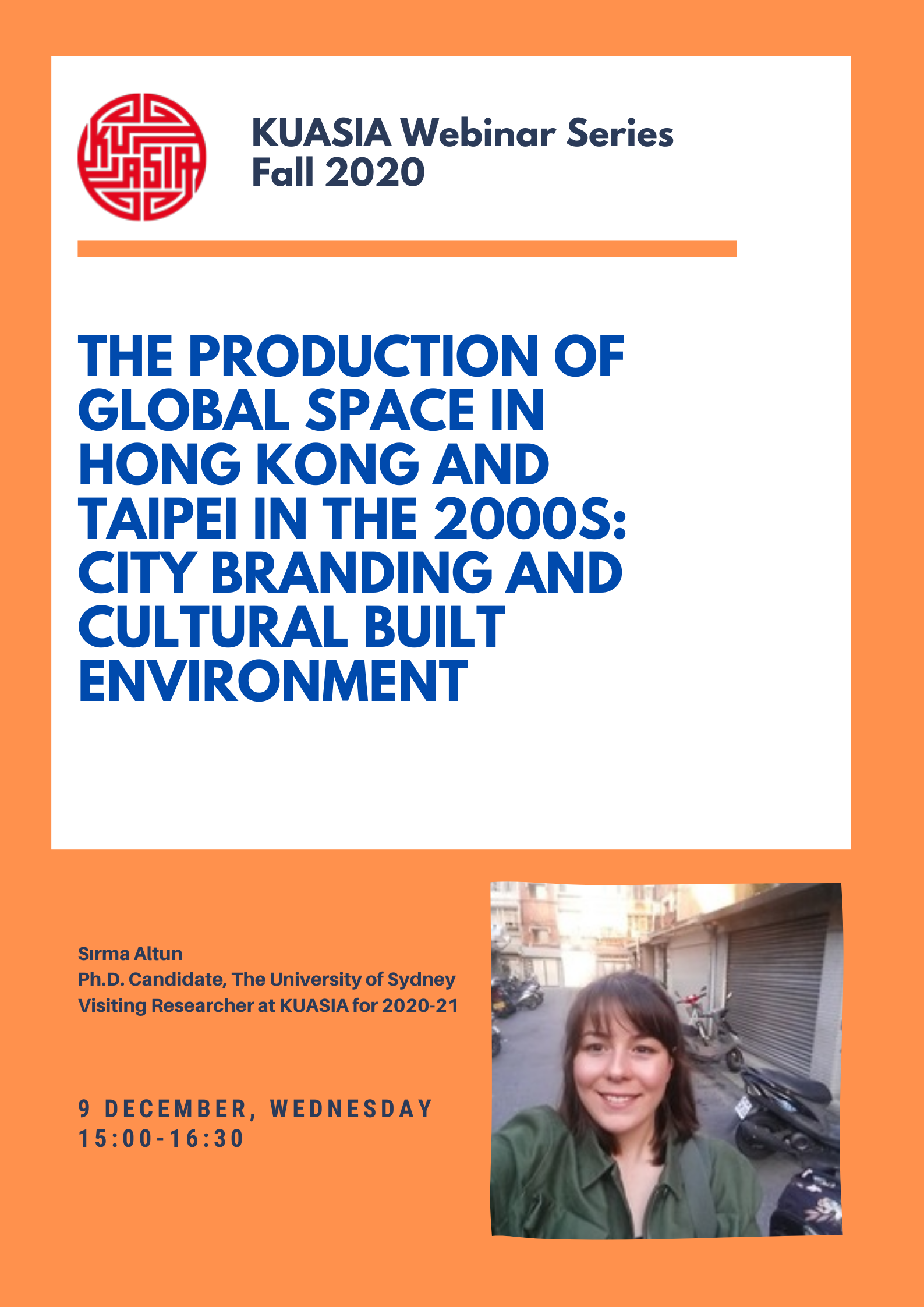KUASIA Fall 2020 Webinar Series – The Production of Global Space in Hong Kong and Taipei in the 2000s: City Branding and Cultural Built Environment

Ph.D. Student, The University of Sydney
Visiting Researcher at KUASIA for 2020-21
Abstract
Hong Kong and Taipei embraced global city formation in the late 1990s as part of their socio-spatial ‘repositioning’ amidst the rise of China and transformations in global capitalism. How is space produced in Hong Kong and Taipei, two Asian global cities? This question constitutes the main pillar of my Phd research on global city formation and socio-spatial struggles in Hong Kong and Taipei in the 2000s. In this presentation, I will explore the ways in which Hong Kong and Taipei’s global space was produced, in representative as well as in physical forms, through city branding and cultural built environment.
The analysis of Hong Kong and Taipei’s city branding and cultural built environment in this presentation is built on data and insights gathered during fieldwork and from online resources. Global city formation in both cities are examined by engaging with policy papers, planning documents, statistical yearbooks, promotional publications, laws and regulations as well as public speeches given by government officials such as Chief Executive and Finance Minister in Hong Kong and the Mayor of Taipei City Government. The semi-structured interviews conducted in both cities also provide a background for this presentation in questioning global city formation for whom?’, hence for exploring the politics of global/cultural city narratives. Nevertheless, the presentation will tackle with how culture, as a global city project, unfolds in Hong Kong and Taipei’s urban space in the 2000s.
Overall, the presentation aims to unpack the ways in which state-society relations are configured over global city formation in Hong Kong and Taipei in the 2000s. Therefore the presentation will address the role of state, in multiple scales, for the production of Hong Kong and Taipei’s global space.